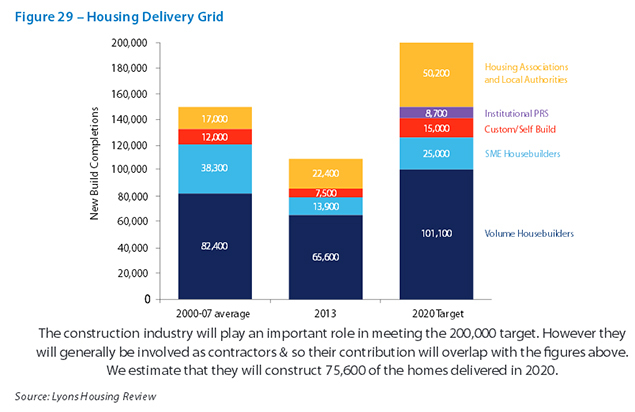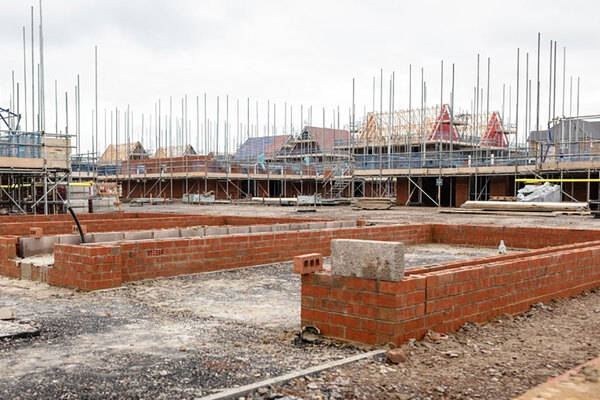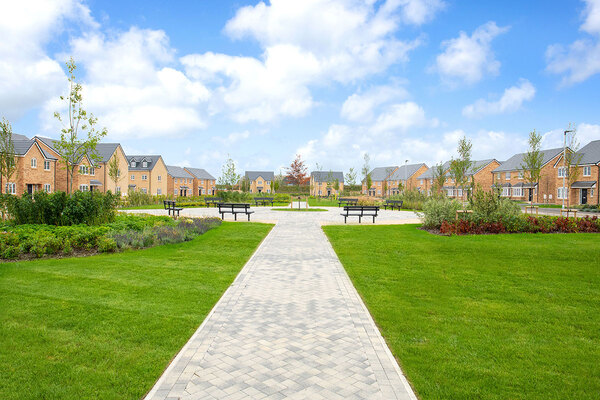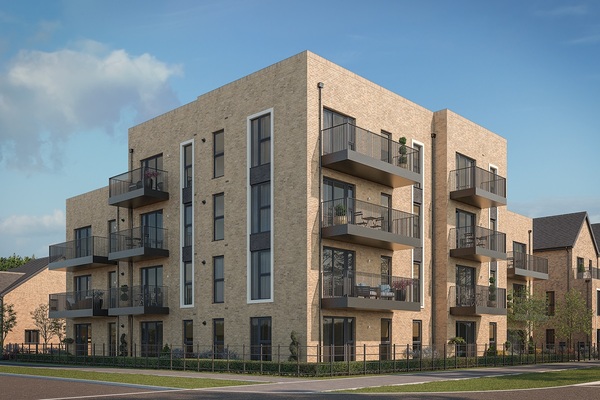You are viewing 1 of your 1 free articles
Reading between the Lyons
After months of feverish waiting, Sir Michael Lyons has finally delivered his take on how a Labour government can meet their target of building 200,000 homes a year by 2020. Nick Duxbury spent an afternoon analysing the 180 page document so you don’t have to.

After months of feverish waiting, Sir Michael Lyons has finally delivered his take on how a Labour government can meet their target of building 200,000 homes a year by 2020. Those hoping for a clear to-do list of recommendations might be disappointed: the resulting report is a far-reaching and detailed exploration of the hurdles holding back house building. Often there appears to be a tension between what Sir Michael thinks should be done, and what he feels is realistically possible. With Labour spinning the impact of the recommendations on first time buyers and house builders, here is a crude analysis of what they could mean for social landlords.
Was the review worth the wait?
The consensus so far seems to be that the Lyons review has done a good job of covering all the bases comprehensively. For some the recommendations are not radical or new enough, and fail to move away from long-standing focuses on home-ownership and supporting the housing market (as Jules Birch explains here). Others appear to be disappointed by the lack of teeth in the review; often Sir Michael shies away from recommending what he seems to be arguing for. But Sir Michael has undoubtedly listened, and his response clearly echoes longstanding calls from the housing sector.
So who does Sir Michael expect is going build the 200,000 homes?
You, mostly.
In 2013 there were 109,400 homes built. To ramp up to 200,000 by 2020 will require a big push by all parts of the development community. But from the outset of the report, Sir Michael acknowledges: ‘it is clear that we cannot rely on the volume house builders, as important as they are’.
There are plenty of measures outlined to help developers build more (from 65,600 last year up to 101,100 by 2020) - but ultimately, there is no getting away from the fact that Lyons sees councils and housing associations as being key to reaching the 200,000 figure. Effectively it requires housing associations and councils to double the number of homes they are building at present from 22,400 in 2013 to 50,200 in 2020.

Source: Lyons Housing Review
Great! So Lyons is finally recognising the importance of social landlords in tackling the housing crisis?
Yes. But that’s not necessarily entirely good news for landlords. For housing associations, it is clear that Sir Michael thinks the government needs to intervene to get organisations to build more.
The review talks of the need to ‘unlock the ambition and capacity of housing associations and councils to build more homes’. It states: ‘As a sector housing associations have considerable expertise and ambition, however it is not clear that extends across the whole sector and it will be important that all are encouraged to adopt new approaches and maximise capacity for new homes.’
Okay, so what does that actually mean?

Source: Istock
In his view, housing associations make huge surpluses and are sitting on £12bn of undrawn debt. The report quotes the National Housing Federation’s view that there are 100 housing associations that have the capacity to become big players, but at the moment, are not.
He therefore recommends: ‘to unlock the ambition and potential of the sector, government will need to work actively with housing associations to help mobilise the surpluses and borrowing headroom that sits on the balance sheets of some of the largest housing associations, in London and the south east in particular, and leverage them in parts of the country where housing need is not matched by the capacity and willingness to invest.’
Specifically, he suggests:
1.) Hold discussions with the sector about how to unlock further investment from housing associations which could include consideration of partnerships and the option for ‘a gatewayed approach’ and setting an overall envelope for an association’s rents.
2.) Extending the Affordable Homes Guarantees Programme to 2020 to give associations the confidence and certainty to commit to more long-term projects, and extending the guarantee to allow associations to re-finance debt to release more capacity.
3.) Consider the case for lifting restrictions on the way stock transfer organisations value their properties to increase borrowing capacity, on a case by case basis, dependent on their ability to demonstrate it would result in additional affordable homes.
Suggestions two and three would be welcomed by most associations. But the first suggestion is more open to interpretation…
But housing associations are independent companies with boards to assess risk - what if we don’t the government’s ‘help’ in ‘mobilising’ our surpluses and borrowing to build?
This is unclear.
There is no detail on whether this should entail forcing associations to do more, or offering them new freedoms. However, there is a strong hint that if you are not prepared to utilise your full development potential, then consolidation could be on the cards. Sir Michael makes it clear that housing associations that are not building enough homes should consider merging. There are 1,500 housing associations in England (each with their own chief executive and board) and only 250 of these have 1,000 homes or more. It seems that this is being eyed for change. Sir Michael believes that associations’ reason for existing is to build homes – yet many are not doing this on a meaningful scale.
The review states: ‘There may be an opportunities through partnership working or further mergers in the sector to increase borrowing capacity in the places where it is needed, and to create economics of scale that will create headroom for new investment and to allow greater potential to cross subsidise over wider geographical areas.’
So how is all this going to be funded? Surely association balance sheets won’t be able to take the full strain without extra grant funding?

Ah, so you spotted the elephant in the room. A less fair minded commentator might suggest said elephant was leaning on Sir Michael.
Throughout the report, he is consistent in his support for capital investment social housing. He concedes that ‘it is clear that without further capital support there will be a limit to the amount councils and housing associations are able to do to meet the need for affordable homes. Indeed, he also states: ‘The argument is that we should begin to shift the balance back towards investment and away from benefits. While recognising that the move will take time to achieve, this call is strongly supported by the review.’
This isn’t just sentiment. Sir Michael cites research by John Healey MP which demonstrates clear cost-benefits of providing government subsidy through grant funding to build affordable housing, rather than through the revenue model currently in place. This work found that although homes for social rent require higher initial grant investment than affordable rents, they pay back the additional capital outlay through housing benefit savings after only 12 years. They pay back the full grant investment within 27 years. In contrast, the report says that investment in affordable rents (which require higher benefit payments) do not pay back the initial grant over the 30 year period.
Similarly, Sir Michael indicates that he believes that affordable rent – and to some extent social rent – is not meeting housing need; in short that it’s not actually that affordable. As a result he favours exploring linking rents to incomes to ensure they are actually affordable.

So far so good…
Yes, but Sir Michael stops well short of following through with the logic of his arguments. His conclusion over the future of grant funding is arguably a bit of a cop out: ‘This is therefore an issue that government will need to return to in future and should ensure that investment in housing is better reflected as a priority for government in future decisions on public spending.’
In fact, the real message is: the age of relying on grant funding is over. ‘While there is a clear case for continued public investment in affordable housing, it is equally clear that there will not be a return to the old models of sole reliance on grant,’ the report states. ‘The review recognises that constraints on public spending and debt mean that the scope for increased capital spend is likely to be severely limited in the immediate term.’
Or, as Sir Michael’s told Inside Housing, associations are ‘mesmerised’ by the issue of low government grant and need to ‘get on with it’ and build homes.
But hasn’t Ed Balls already said housing will be a capital investment priority for a Labour government?
Yes. But that doesn’t necessarily mean more grant funding. Sir Michael says that his recommendations are actionable without ‘additional public expenditure’.
The most explicit explanation from Sir Michael is here: ‘Housing should become a priority for national investment once again, but we must consider carefully the best way to target public subsidy, look to investment rather than grant and look more creatively at how we use public land to encourage house building.’
In all likelihood there would be a limited amount of extra grant on the table – but no fewer strings attached to it. A more likely avenue would be more use of government guarantees, equity loans and measures to reduce costs and barriers to investment.
But what about lifting the borrowing caps on local authorities’ housing revenue accounts? Surely that is a quick fix to getting local authorities to scale up development?

Labour is desperate to be perceived to be fiscally trustworthy. That causes problems for allowing councils to borrow more.
Once again, the tone of the report would seem to suggest that Sir Michael favours lifting council debt caps entirely. But it also seems clear he feels unable to actually recommend doing so due to the need to tackle the national deficit. The compromise he suggests, as tipped by Inside Housing, is to enable councils to apply to the Treasury on a case by case basis for extra borrowing headroom. This would be based on the Treasury ensuring that there is not an increase in overall borrowing.
He concludes that the government ‘should initiate a review into whether there is a need for increase of headroom in the longer term and options that would allow councils to borrow for housing investment in line with the requirements of the prudential borrowing code.’
So the Lyons review is already calling for another review?
I suppose so, yes.














